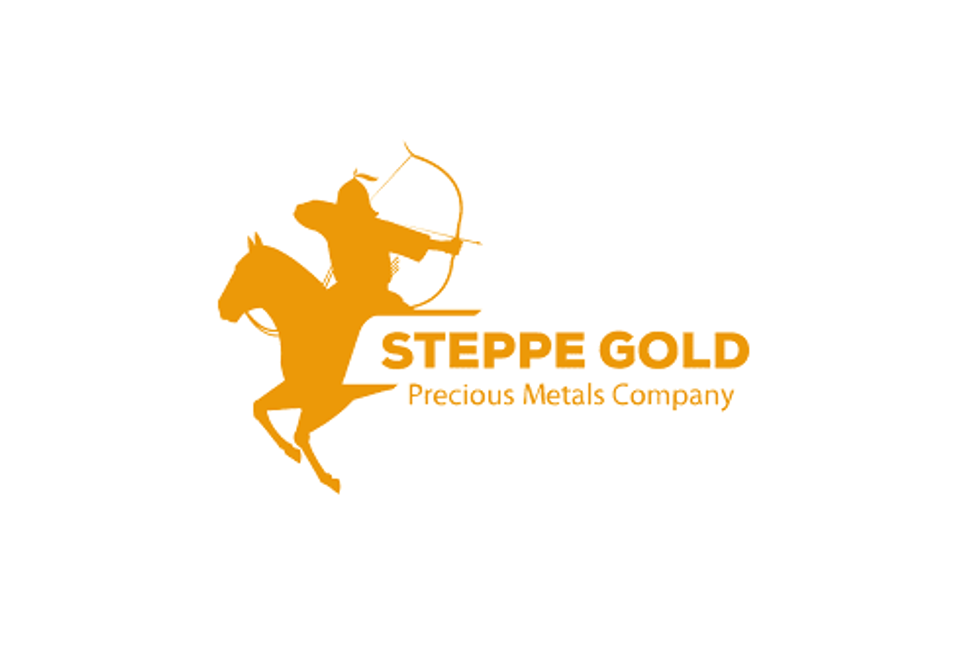- AustraliaNorth AmericaWorld
Investing News NetworkYour trusted source for investing success
- Lithium Outlook
- Oil and Gas Outlook
- Gold Outlook Report
- Uranium Outlook
- Rare Earths Outlook
- All Outlook Reports
- Top Generative AI Stocks
- Top EV Stocks
- Biggest AI Companies
- Biggest Blockchain Stocks
- Biggest Cryptocurrency-mining Stocks
- Biggest Cybersecurity Companies
- Biggest Robotics Companies
- Biggest Social Media Companies
- Biggest Technology ETFs
- Artificial Intellgience ETFs
- Robotics ETFs
- Canadian Cryptocurrency ETFs
- Artificial Intelligence Outlook
- EV Outlook
- Cleantech Outlook
- Crypto Outlook
- Tech Outlook
- All Market Outlook Reports
- Cannabis Weekly Round-Up
- Top Alzheimer's Treatment Stocks
- Top Biotech Stocks
- Top Plant-based Food Stocks
- Biggest Cannabis Stocks
- Biggest Pharma Stocks
- Longevity Stocks to Watch
- Psychedelics Stocks to Watch
- Top Cobalt Stocks
- Small Biotech ETFs to Watch
- Top Life Science ETFs
- Biggest Pharmaceutical ETFs
- Life Science Outlook
- Biotech Outlook
- Cannabis Outlook
- Pharma Outlook
- Psychedelics Outlook
- All Market Outlook Reports
Canamex Resources CEO: the Bruner Project Could Be a Multi-Million-Ounce Deposit

Canamex Resources CEO David Vincent shares his insights on the resource sector, the position of the company’s Bruner project and how Canamex aims to increase shareholder value.
Canamex Resources Corp (TSXV:CSQ; OTCQX:CNMXF; FSE:CX6) is engaged in fast-tracking toward production at the Bruner Gold Project in the prolific gold jurisdiction of Nye County, Nevada. The region is home to several producing and past-producing mines along the Walker Lane Trend. The Bruner Gold Property is surrounded by multi-million-ounce gold deposits, including Paradise Peak, Round Mountain and Rawhide.
The company’s growth strategy includes developing sufficient resources for production on patented claims first, shortening the time to permit in order to move quickly to smaller-scale production operations. Near-term cash flow generation will allow Canamex to build value for shareholders by minimizing dilution risk while further growing the resource through drilling.
Canamex completed a positive Preliminary Economic Assessment (PEA) on the Bruner Gold Project in April 2016. However, based on additional drilling conducted on the property that Canamex CEO David Vincent believes should help increase the resource, the company has requested a new PEA and resource estimate. Vincent believes that the Bruner project has significant growth potential and he foresees that the property could hold a multi-million-ounce gold deposit.
Below is a transcript of our interview with Canamex CEO David Vincent. It has been edited for clarity and brevity.
Investing News Network: Please give our investor audience an overview of Canamex Gold and the Bruner project in Nye County, Nevada.
Canamex CEO David Vincent: The Bruner project is located in the mining-friendly and fairly prolific jurisdiction of Nevada. The state produces 75 percent of United States gold production.
The Bruner project is currently at the stage where a preliminary economic assessment (PEA) was completed in 2016. Since then, Canamex has conducted a significant amount of drilling with the goal of updating that PEA. These results are being analyzed and we expect to see a revised PEA in December of this year. Our expectation is that the resource numbers should increase, but we are not yet certain by what degree. Additionally, following our drilling initiative, some of our inferred resources should shift to indicated resources, which would also enhance the economics in the PEA study.
With regards to the company’s valuation, we believe it has been significantly undervalued by the market. The current PEA shows the net present value (NPV) at C$83 million. Meanwhile, the market cap for the company is C$8 million. As such, there is a significant upside potential because the company is trading at an 85 percent discount to the Bruner project NPV.
INN: David, we understand that you were recently appointed as the CEO of Canamex. Can you please tell us about yourself and your background?
DV: I’m a professional engineer by training with post-graduate training and experience in management and financial services. In the financial services sector I was a consultant for many years with an investment banking group, providing corporate advisory services and capital-raising services within the resources sector. As a result, I have a strong understanding of the resource sector. I was also a senior executive at a multinational aerospace company, BAE systems. In that role I conducted international business development in Europe and the Middle East, writing feasibility studies and conducting market analyses, business planning, project financing and marketing. I have a diverse range of skills and I have a strong network within the financial services industry, particularly in the resources sector, which is useful when it comes to securing financing.
INN: As the new CEO, what is your vision for the company and how do you plan on increasing its value to shareholders?
DV: It all comes down to where we are in the market cycle. 18 months ago, the resource sector turned the corner and emerged from what I call a 15-year ‘super cycle’. The last low for the sector was in December 2015—21 months ago—and the low before that was in 2000, 15 years apart for the super cycle low to low. As such, the next low in this cycle should be in 2031, which means we have another nine years ahead in which the sector will thrive into the super cycle peak in 2027.
With regards to Canamex itself, for resource companies, there are two “S” curves to leverage off. The first is the exploration S curve, where a company makes a new discovery and shareholders benefit as a result of value uplift, spanning approximately two years. The second S curve is mine development, where the company works on completing its feasibility study and builds a mine. That curve generally lasts between three and five years. With respect to Canamex, we are currently riding the beginning of the mine development curve and this will add shareholder value, over the next three to five years as we build a mine. In addition to that, we are also exploring opportunities to acquire a new exploration property in order leverage off the exploration discovery S curve.
INN: How do you feel that Canamex compares to other resource companies in the region and is there a specific company that you measure yourself against?
DV: There is a company, Northern Vertex (TSXV:NEE), that has a project in Northwest Arizona which is very similar to ours in terms of resources, internal rate of return (IRR) and other metrics. They have completed a PFS, and are building a mine. Their PFS show an NPV of C$102 million. Meanwhile the PEA for our Bruner project shows an NPV of C$83 million. On a per-share basis, Northern Vertex is trading at around a 10 percent premium to its NPV, whereas Canamex is trading at an 85 percent discount. On that basis alone, Canamex is being significantly undervalued by the market. Why? I don’t know. It shouldn’t be.
INN: Please tell us about what led Canamex to request an updated mineral resource and a new PEA for the Bruner project.
DV: We conducted two drill programs on the property, one this year and one in late 2016. Over the course of these programs, we drilled outside the existing resource pit envelopes outlined in the PEA as well as between the various pit designs and in both cases we found additional mineralization. We have decided to plug these drill results into the PEA and see how this affects the project economics. We are very confident that in the next iteration of the PEA we will have an increased resource as well as, perhaps, an increased IRR and other metrics. Currently, the IRR before tax is 42 percent, so if for example the new PEA shows an IRR of closer to 50 percent, before tax, then the Bruner project would become very robust. Generally, most gold mines have an IRR of between 15 percent and 25 percent, so we would be double the normal range. Additionally, our planned capital payback on this project is only 15 months and the estimated capital expenditure is only $33 million, which is quite low for a new mine.
INN: Can you detail or outline some of the upcoming catalysts you can foresee for the Bruner Project once these reports are updated and released?
DV: One of the next steps for us is permitting, a process which we have already begun and for which we will be recruiting a project manager in the coming weeks. We are also looking to employ an additional one or two geologists so that we can advance our project further.
On the property itself, we want to conduct more drilling so as to expand the resource and the level of confidence in the PEA study. Lastly, the company is considering the possibility of acquiring a pure exploration property in an area of Nevada that would complement the Bruner asset.
INN: Is there anything further that you would like to highlight for our investors?
DV: One of the main considerations for investors looking at companies in the gold exploration and mining sector should be their management, particularly if they have skin in the game. What I mean by that is whether the management team has equity in the company such that they are fully aligned with shareholder interests. For instance, in Canamex, the management and insiders owns more than 20 percent equity in the business, which they purchased with their own money. What that means is that they’re motivated to increase value for themselves in a way that also increases value for all other shareholders in the company.
With respect to Canamex’s Bruner project, the upside is tremendous as only 20 percent of existing targets have been drilled. An example of what the project’s potential growth might be is seen in the Long Canyon gold deposit now owned by Newmont. In earlier days, the resources at Long Canyon were pretty similar to those at the Bruner project. After Newmont did further drilling, the project was carrying 3.4 million-ounce gold resource at the end of 2015. That is what could happen with Bruner; there is still significant exploration potential and it could be a multi-million-ounce deposit. Our mission here is to develop the project, build the mine and then use the resulting cash flow to conduct further exploration and expand the resource.
CEO interviews are part of investor education campaigns for clients advertising on the Investing News Network. Important news is contextualized by CEOs, and the resulting interviews are disseminated to the Investing News Network audience because they have value to market watchers.
The Investing News Network interviews a CEO for an understanding of their perspective on the company, the investment potential of the company and market news related to the company. The information contained here is for information purposes only and is not to be construed as an offer or solicitation for the sale or purchase of securities.
Outlook Reports
Featured Precious Metals Stocks
Browse Companies
MARKETS
COMMODITIES
| Commodities | |||
|---|---|---|---|
| Gold | 2382.18 | +0.38 | |
| Silver | 28.88 | -0.01 | |
| Copper | 4.35 | -0.03 | |
| Oil | 85.87 | +0.46 | |
| Heating Oil | 2.67 | +0.01 | |
| Natural Gas | 1.69 | 0.00 | |
Investing News Network websites or approved third-party tools use cookies. Please refer to the cookie policy for collected data, privacy and GDPR compliance. By continuing to browse the site, you agree to our use of cookies.





